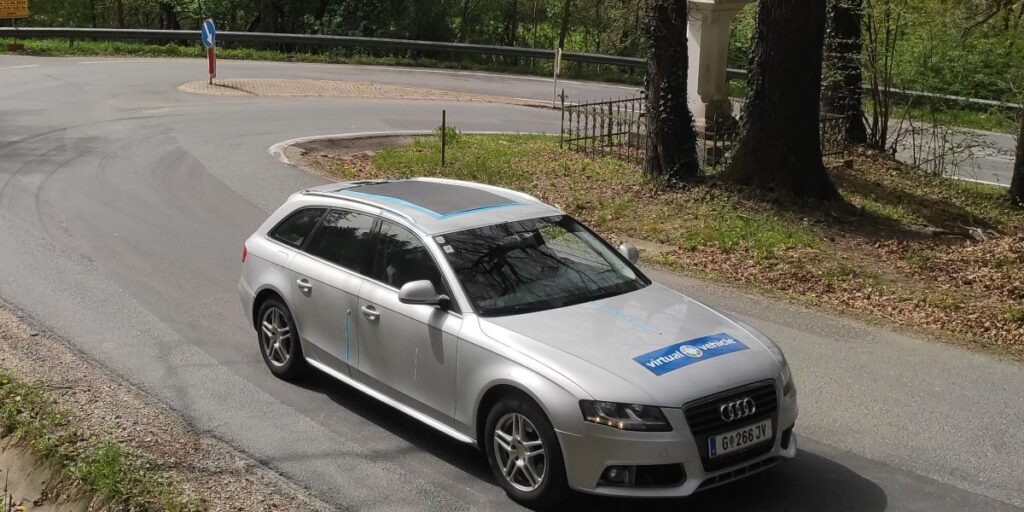Austrian researchers developed a model to quantify the benefits of vehicle-integrated solar photovoltaics (VIPV) on the energy needs of three different sizes of electric vehicles in the city of Graz, Austria, specifically the effect on battery energy and mileage the vehicle.
Researchers have developed a model to quantify the benefits of vehicle-integrated photovoltaic (VIPV) solutions on three different sizes of electric vehicles (EVs) in the city of Graz, Austria, specifically the effect on battery energy and mileage.
The model revealed several key factors that influence energy yield and EV traffic yield, including understanding the weight range, the area to be covered with PV, what type of PV, and energy consumption.
“Our research presents a simulation model that allows adjustments to several parameters, including time, date, driving and parking cycles and vehicle type. This model allows comparisons of solar energy production across different seasons and usage patterns,” says Judy Jalkh, corresponding author pv magazineadding that it calculated solar PV contributions from vehicle zones, such as the roof, hood, trunk and doors.
“Additionally, it helps identify the key vehicle design factors that influence the success of VIPV integration.”
The study used a solar radiation calculator implemented in Python using the U.S. Department of Energy’s Sandia National Laboratory’s PVLIB-Python modeling tool, which included shadow simulations. The results were fed into a second model of a vehicle equipped with PV, created with Matlab/Simulink and including powertrain modeling.
The three types of electric vehicles analyzed were a Volkswagen ID.Buzz, a Volkswagen ID.3 and a Fiat 500e. The calculations included two types of PV cell technologies: one with an efficiency of 12% and the other with an efficiency of 20%.
A third pillar of the research was a measurement campaign for outdoor vehicles that provided real-world driving data on irradiation and ‘complex shadow’ scenarios. A demonstration vehicle was equipped with various measuring equipment, including various pyranometers and thermocouples.
The simulations showed contributions per car surface zone. “Using high-efficiency rooftop PV modules can save more than 20% of monthly mileage from March to September,” the researchers said. “Depending on the size, the hood can also be a good option. On the other hand, the doors are the most economical for extra energy in the winter months.”
The simulations showed that even in winter and even if the vehicle experiences 30% shaded parking conditions, their VIPV setup still allows for 12% to 20% more mileage before recharging. The team considered transferring the additional range advantage to the powertrain to “open up the possibility of reducing battery size by 12% to 20%,” a move that could offset the cost of PV integration, noting that this was a topic for future research, requiring “a comprehensive cost analysis” of additional PV zones.
“As energy storage and sustainability are crucial factors in the adoption of electric vehicles, VIPV can provide a valuable addition to expand the range of electric vehicles,” said Jalkh. “In addition, there are applications for other transport sectors, such as heavy vehicles (buses, trucks) and smaller vans where energy efficiency is paramount.”
The work was done by a team from Virtual Vehicle Research and Crystalsol, both based in Austria. It was described in detail in “Energy harvesting potential for 3 EVs equipped with PV for the Graz region of Austria”, published by Solar energy materials and solar cells.
The team’s next area of research will focus on the influence of different driving cycles, such as long and short journeys, the duration of driving breaks and the timing of vehicle charging.
“We have already carried out extensive simulations and analyzes on heavy trucks to assess the potential of PV integration in Germany and the UK. We are also investigating how this technology can be adapted for other forms of transport, including buses and smaller vans. By simulating these scenarios, we want to optimize PV systems for a wider range of applications,” explains Jalkh.
Responses to the research presented at special interest conferences have come from a variety of areas, said Jalkh: “Many in the automotive sector see the potential of VIPV technology to support electric vehicle fleets, while scientists are keen to explore further optimizations in material efficiency and performance under varied circumstances. environmental conditions.”
This content is copyrighted and may not be reused. If you would like to collaborate with us and reuse some of our content, please contact: editors@pv-magazine.com.

